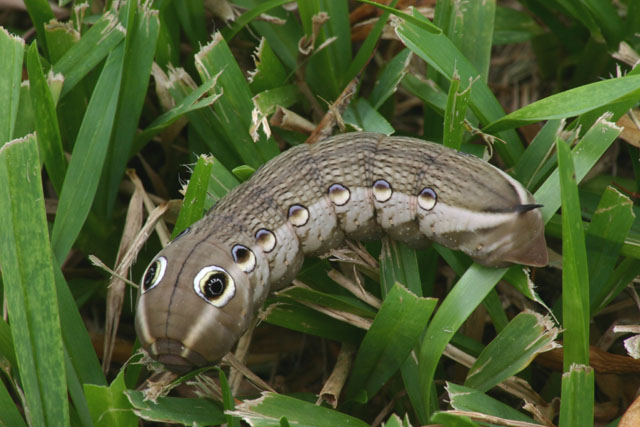
Xylophanes tersa, Houston, Texas, September 15, 2005, courtesy of Greg Andrews.

Xylophanes tersa, Houston, Texas, September 15, 2005, courtesy of Greg Andrews.
Jeanne Davison, Lake Conroe, Willis, (Montgomery County) Texas, sent me the image of Aellopos titan at the bottom of the page, 7/30/06.
Greg writes, September 15, 2005, "I found your page for the Tersa Sphinx and need to see if this is the same thing. I found about a dozen of these in one of my Penta plants today.
"From the two pictures I sent, I had some dark ones and some super bright green ones. All in all, I've found sixteen so far, including one baby one. The are about two inches long and a little over 1/8 inch in diameter.
"All of them created a burrow [in some soil]. Some of them interestingly enough actually made a lean-to hut with 3 leaves and a part of a paper towel (that we use to provide moisture to the container). The burrows all have a full leaf pulled over them and are secured in place with a thin, tacky webbing."
Karl Kaylor writes, "Xylophane tersa larvae, found on August 22, 2006. Location: In my front yard, eating my pentas. Very southern part of Tomball, Texas in NW Harris county. Zipcode 77377. Saw a total of 7, most were quite fat, but one was still young/skinny."
Seventy-five Sphingidae species are listed for Texas on the U.S.G.S. website (now BAMONA). Not all of the species are reported or anticipated in the southeastern region. It is hoped that this checklist, with the thumbnails and notes, will help you quickly identify the moths you are likely to encounter.
Linda Williams sends this beautiful image of a freshly emerged Amorpha juglandis, from Port Neches, Jefferson County.
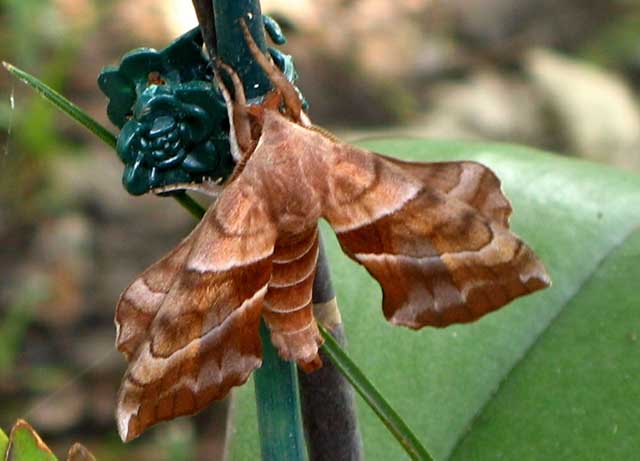
Amorpha juglandis, Port Neches, Jefferson County, Texas,
May 9,
2009, courtesy of Linda Williams.
Please help me develop this list with improved, documented accuracy by sending sightings (species, date, location), preferably with an electronic image, via email to Bill Oehlke.
Many thanks to Kellie Birch who provides a beautiful image of Eumorpha fasciatus.
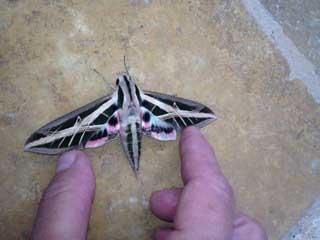
Eumorpha fasciatus, Pasadena, Harris County, Texas,
September 7, 2013, courtesy of Kellie Birch.
Ashley Tarleton sends the following image from Houston Texas.
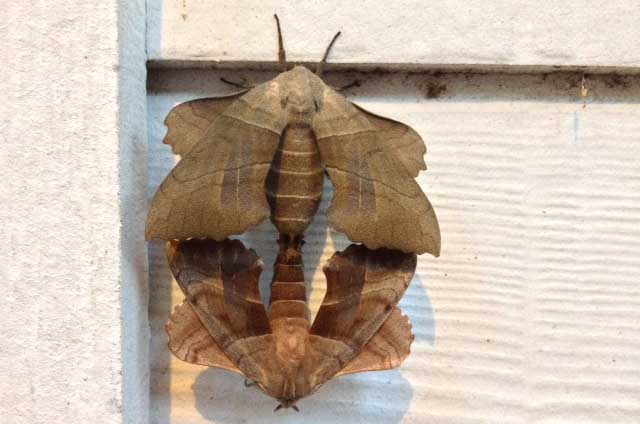
Amorpha juglandis in copula, Houston, Texas,
July 1, 2014, courtesy of Ashley Tarleton.
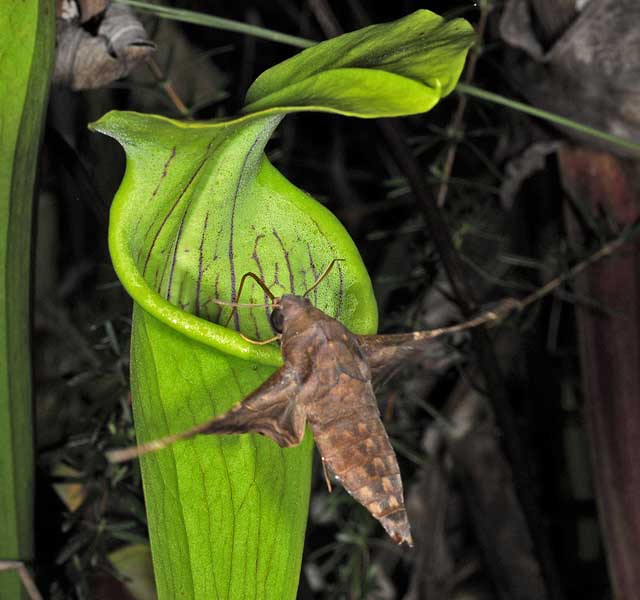
Enyo lugubris nectaring at Sarracenia alata, October 17, 2008, 50m,
Sabine National Forest, Jasper County, Texas, courtesy of Wolfgang Stuppy.
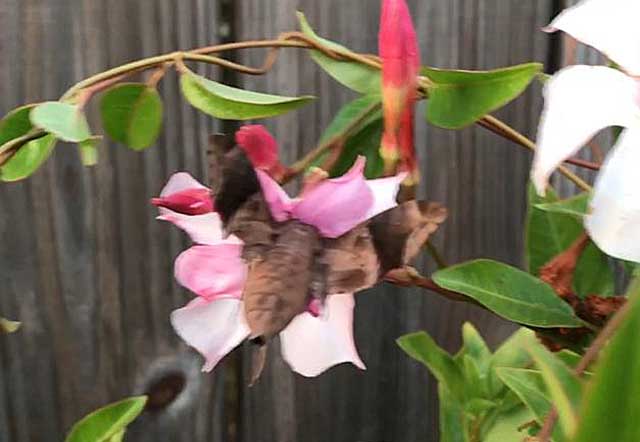
Enyo lugubris female, Montgomery County, Texas,
October 10, 2018, courtesy of Juliette Robb.
Sphinginae subfamily
Smerinthini Tribe:
Macroglossinae subfamilyDilophonotini tribe:
Sabine National Forest, Jasper County, Texas, courtesy of Wolfgang Stuppy. Enyo lugubris female, Montgomery County, Texas, October 10, 2018, courtesy of Juliette Robb.
See bshthysbe.htm>Hemaris comparison to help distinguish the next two species.
Philampelini tribe:
Eumorpha fasciatus, Pasadena, Harris County, September 7, 2013, Kellie Birch.
Eumorpha pandorus (worn), Huntington, Angelina County, July 30, 2014, Jay Garth
Macroglossini tribe:
Xylophanes tersa, Kingwood, Montgomery County, October 5, 2009, Christine Randall. |
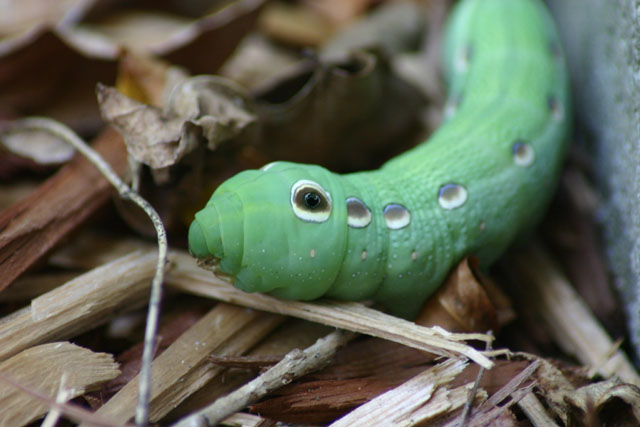
Xylophanes tersa, Houston, Texas, September 15, 2005, courtesy of Greg Andrews.
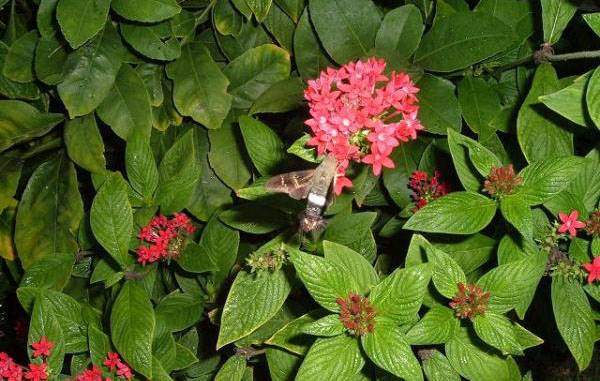
Aellopos titan nectaring at Pentas, Lake Conroe, Willis, (Montgomery
County) Texas,
July 30, 2006, courtesy of Jeanne Davison.
Enjoy some of nature's wonderments, giant silk moth cocoons. These cocoons are for sale winter and fall. Beautiful Saturniidae moths will emerge the following spring and summer. Read Actias luna rearing article. Additional online help available.
Use your browser "Back" button to return to the previous page.
This page is brought to you by Bill Oehlke and the WLSS. Pages are on space rented from Bizland. If you would like to become a "Patron of the Sphingidae Site", contact Bill.
Please send sightings/images to Bill. I will do my best to respond to requests for identification help.
|
|
 Show appreciation for this site by clicking on flashing butterfly to the left. The link will take you to a page with links to many insect sites. |
I very much appreciate all the many images that have been sent to me, or of which I have been granted permission to copy and post from other websites. All images on this site remain the property of respective photographers.
If you would like to contribute to the maintenance of this website by sending a contribution to
Bill Oehlke
Box 476
155 Peardon Road
Montague, Prince Edward Island,
C0A1R0
Canada
your donation would be much appreciated and would be used for
1) paying
for webspace rental;
2) paying for computer maintenance and software
upgrades;
3) purchases of additional text reference material (journals and
books) in anticipation of expanding the site to a worldwide Sphingidae site;
4) helping to pay my daughter's tuition (completed
2013); with anything left over going to humanitarian aid.
If you are mailing a check from USA, please use $1.10 postage; ($1.25 2018 rate). Donations can also be made through Paypal via the button below.